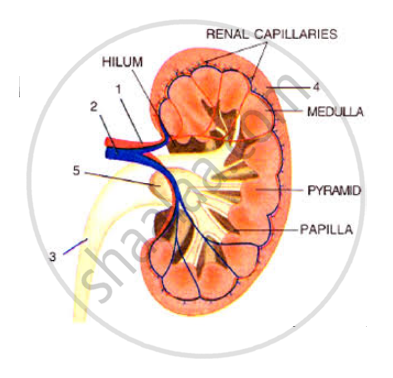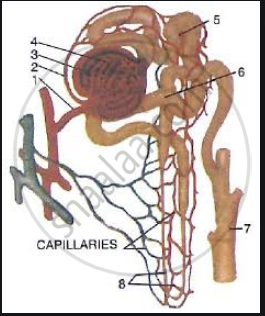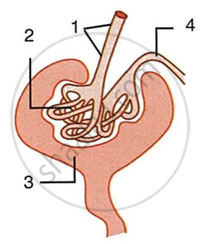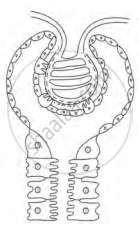Advertisements
Advertisements
प्रश्न
Why is the rate of breathing in aquatic organisms much faster than in terrestrial organisms?
उत्तर
Aquatic species breathe more quicker than terrestrial organisms because oxygen supply in water is lower than on land, hence aquatic organisms must work harder to collect the oxygen they require.
APPEARS IN
संबंधित प्रश्न
Match structures given in Column I with functions given in Column II.
| Column I | Column II | ||
| (i) | Stomata | (a) | Absorption of water |
| (ii) | Xylem | (b) | Transpiration |
| (iii) | Root hairs | (c) | Transport of food |
| (iv) | Phloem | (d) | Transport of water |
| (e) | Synthesis of carbohydrates |
Name the Following
The organ which produces urea.
the biological/technical terms for the hormone increasing reabsorption of water by kidney tubules
The diagram given below shows the male urinogenital system of a human being. Study the diagram and answer the questions that follow:

(i) Label the parts numbered 1 to 8.
(ii) Name the corresponding structure of part (4) in female reproductive system.
(iii) What is the role of part 7?
What gaseous waste products are excreted by plants?
Fill in the following blank with suitable word:
Gums and resins are the .......... products of plants.
Why do some people need to use a dialysis machine? What does the machine do?
With which human organ system (or human systems) is glomerulus associated?
If a patient is out on dialysis, he is most likely suffering from a severe ailment of the:
(a) circulatory system
(b) respiratory system
(c) excretory system
(d) digestive system
If you donate one kidney to a needy patient, would it cause any harm to you? Give reason.
Define the following term:
Osmoregulation
Look at the figure given below. It is a section of human kidney as seen from the front.

Which area/part (give its name and number given on the diagram) which contains the following:
(i) Malpighian capsule
(ii) The pyramids
(iii) Freshly collected urine
The following diagram represents a mammalian kidney tubule (nephron) and its blood supply.

Parts indicated by the guidelines 1to 8 are as follows:
1. Afferent arteriole from renal artery
2. Efferent arteriole
3. Bowman's capsule
4. Glomerulus
5. Proximal convoluted tubule with blood capillaries
6. Distal convoluted tubule with blood capillaries
7. Collecting tubule
8. U-shaped loop of Henle
Study the diagram and answer the question that follow:
Which structure contains the lowest concentration of urea?
Study the diagram given below and then answer the questions that follow:
 |
- Name the region in the kidney where the above structure is present?
- Name the parts labelled 1, 2, 3 and 4.
- Name the stages involved in the formation of urine.
- What is the technical term given to the process occurring in 2 and 3? Briefly describe the process.
Given below is a simple diagram of the human kidney cut open longitudinally. Answer the following questions:
c
(v) Write two differences in the composition of the blood flowing through blood vessels A and B.
Complete the following sentence with appropriate word:
______ supplies blood to kidney.
Choose the correct option.
What is micturition?
Answer the following question.
Name any one guanotelic organism.
Complete the diagram/chart with correct labels/ information. Write the conceptual details regarding it.

